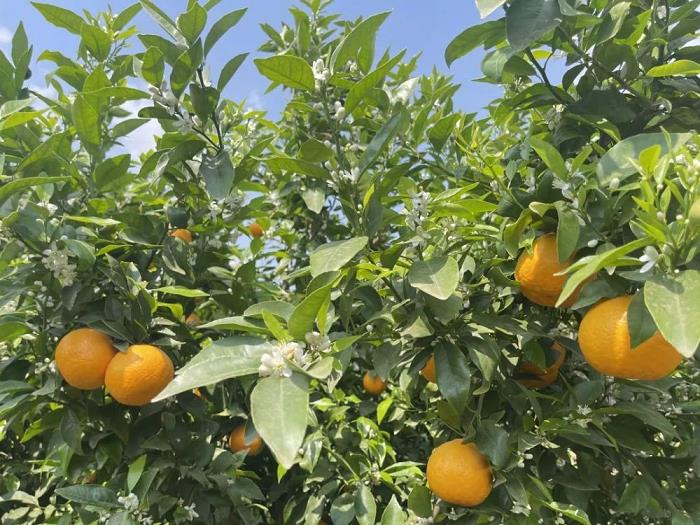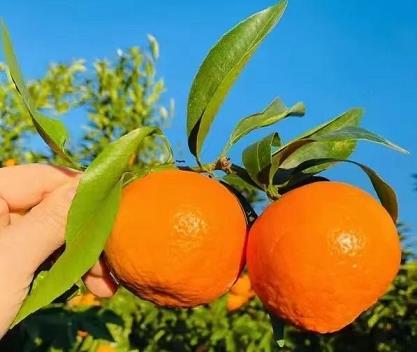微信号
WWW2450711172
Summary : How can conifers that are used, for example, as Christmas trees, keep their green needles over the boreal winter when most trees shed their leaves? Science has not provided a good answer to this question but now an international team of scientists has deciphered that a short-cut in the photosynthetic machinery allows the needles of pine trees to stay green.
How can conifers that are used, for example, as Christmas trees, keep their green needles over the boreal winter when most trees shed their leaves? Science has not provided a good answer to this question but now an international team of scientists, including researchers from Umeå University, has deciphered that a short-cut in the photosynthetic machinery allows the needles of pine trees to stay green. The study was published in the journal Nature Communications.
In winter, light energy is absorbed by the green chlorophyll molecules but cannot be utilized by the downstream reactions in the photosynthetic machinery as freezing temperatures stop most biochemical reactions. This is especially a problem in the early spring when temperatures can still be very low, but sunlight is already strong, and the excess light energy can damage the proteins of the photosynthetic machinery. The researchers showed that the photosynthetic apparatus is wired in a special way which allows pine needles to stay green all year long.
Under normal conditions, the two photo *** s, the two functional units where light energy is absorbed and converted into chemical energy, are kept apart from each other to prevent a short-cut and allow efficient photosynthesis. In winter, the structure of the thylakoid membrane, where the two photo *** s are located, is reorganized which brings the two photo *** s in physical contact. The researchers showed that photo *** II donates energy directly to photo *** I and this short-cut mode protects the green chlorophyll and the needles when conditions become harsh.

"We have followed several pine trees growing in Umeå in northern Sweden over three seasons," says Pushan Bag, PhD student at Umeå University, who has collected samples all around the year and made many of the *** yses. "It was essential that we could work on needles "straight from outdoors" to prevent that they adjusted to the higher temperatures in the lab environment before we *** ysed them for example with electron microscopy which we used to visualize the structure of the thylakoid membrane."
All plants have safety valves to deal with the excess light energy which is either dissipated as heat or as fluorescence light. However, only conifers seem to have such powerful valves that they can keep the photosynthetic apparatus intact over the extreme boreal winter. The research team combined biochemistry and ultrafast fluorescence *** ysis, a very sophisticated method that can resolve chlorophyll fluorescence light at a picosecond time scale. Like this, they could demonstrate how the pine needles deal with excess light energy to protect their sensitive photosynthetic apparatus from damage.
"We needed to adjust the equipment to study pine needles in cold temperatures in order to trap the unique mechani *** ," explains Volha Chukhutsina from Vrije Universiteit Amsterdam, who has performed much of the ultrafast fluorescence *** ysis. "We also tried spruce needles but they were hard to fit in a good way into the equipment."
Alfred Holzwarth, who has developed the time-resolved fluorescence measurements adds: "The pine needles gave us the opportunity to study this shortcut mechani *** -- also called spill-over -- as they really show an extreme adaptation."
The study was done with pine trees, but the researchers believe that the mechani *** is probably similar for other conifer species -- like the typical Christmas trees spruces and firs -- because their photosynthetic apparatus is similar.
"This remarkable adaptation not only enjoys us during Christmas but is in fact extremely important for mankind," says professor Stefan Jansson from Umeå University. "Hadn´t conifers been able to survive in extreme harsh winter climates vast areas in the northern hemisphere may not have been colonized as conifers provided firewood, housing and other necessities. Still today they form the basis of the economy in most of the circumpolar taiga region."
Source : Umea University
2020年松材线虫病防治
国际研讨会在线召开
12月21日,由中国林科院主办的2020年松材线虫病防治国际研讨会在线召开。中国工程院院士、中国农业科学院副院长吴孔明,北京林业大学副校长骆有庆,中国科学院沈阳分院研究员姬兰柱,中国林科院院长、国际林联副 *** 刘世荣出席会议。国家林草局科技司有关同志,中国林科院、中国科学院动物所、福建农林大学和哈尔滨市三立雅风科技开发有限公司等相关科研和企业的著名学者以及来自法国、葡萄牙、日本、韩国等国的67位代表参加了会议。会议由中国科学院动物研究所研究员孙江华主持。
国家林草局科技司有关同志指出,国家林草局始终高度重视林业在减缓气候变化和实现可持续发展目标方面的作用,保护森林生态 *** 免受外来有害生物危害是重要任务之一。松材线虫病目前已成为许多国家森林生态 *** 的共同威胁,需要通过有效措施和开展国际合作来控制其危害和传播。国家林草局已组织专题研究项目,联合中国林科院、北京林业大学、南京林业大学及相关机构和企业的专家共同研究松材线虫病防治相关应急技术。希望此次会议能够成为分享不同国家和地区松材线虫病发生危害现状、研究成果和成功经验的平台,促进松材线虫病防控和生态 *** 安全维护等合作。
刘世荣指出,中国是受松材线虫病影响最严重的国家,该病害已经成为危及中国生态安全的重要挑战。该病具有危害性强、适生区广、防治和根除困难等特点,且其危害可能受全球气候变化影响而加剧,目前迫切需要开展国际合作以加强相关认识,促进监测 *** 及防控措施的分享。一要逐步建立起由科学家、政策制定者、森林从业人员及相关企业共同参与的专门性合作 *** ,定期举办分享交流会议。二要持续分享各国松材线虫病相关政策、技术规范和指南。三要着手建立专门网站作为信息共享平台,汇集松材线虫病防治信息与 *** ,为林业从业人员提供实际帮助。

*** 粮农组织森林健康与保护官员Shiroma Sathyapala博士通过主旨报告分享了 *** 粮农组织森林健康和保护项目的情况,并从贸易、监管、经济社会影响的角度分析了松材线虫病研究的重要性和防治措施的必要性,提出在全球尺度应对松材线虫病的措施建议。
法国农业食品环境研究院Géaldine Roux博士、日本森林综合研究所Katsunori Nakamura-Matori博士、韩国林科院Hyerim Han博士、中国科学院动物所赵莉蔺博士和中国林科院新技术所张星耀研究员通过报告分享了松材线虫病分布情况及防治技术研究成果。
与会者就开展相关国际合作进行了深入讨论。
来源:中国林科院
“十三五”我国珍稀濒危物种实现恢复性增长
五年来,我国通过 *** 实施濒危物种拯救工程,建立了占国土面积18%的各类自然保护地,有效保护了90%的植被类型和陆地生态 *** 、65%的高等植物群落,85%的重点保护野生动物种群,大熊猫、朱鹮、亚洲象、藏羚羊、苏铁、 *** 巨柏等珍稀濒危野生动植物种群实现恢复性增长。大熊猫野生种群增至1864只,朱鹮野外种群和人工繁育种群总数超过4000只,亚洲象野外种群增至300头,藏羚羊野外种群恢复到30万只以上。
“十三五”期间我国通过加强野生动物栖息地保护和拯救繁育,不断强化濒危野生动物保护,为300多种珍稀濒危野生动物建立了稳定的人工繁育种群。其中,人工繁育大熊猫数量实现快速优质增长,“十三五”期间繁育成活大熊猫258只,人工圈养种群总数达到633只。对大熊猫、麋鹿、朱鹮、林麝、白颈长尾雉、黑叶猴等一大批野生动物实现放归自然,并不断扩大放归区域和范围,特别是曾在我国野外消失的野马、麋鹿,已重新建立起野外种群,9只人工繁育大熊猫放归自然,并成功融入野生种群。

我国还采取就地保护、迁地保护、回归自然等措施,持续开展珍稀濒危野生植物保护。通过对德保苏铁、华盖木、百山祖冷杉、天台鹅耳枥、普陀鹅耳枥等近百种极小种群野生植物实施抢救性保护,部分濒危物种种群数量逐步恢复。目前,我国建有近200个各级各类植物园,收集保存了2万多个物种,占我国植物区系的2/3。基本完成了苏铁、棕榈和原产我国的重点兰科、木兰科植物等珍稀野生植物的种质资源收集保存。野外回归约120个物种,其中多为我国特有种。
五年来,我国不断完善野生动植物保护管理制度,严厉打击非法贸易。两次修订野生动物保 *** ,加快推进《国家重点保护野生动物名录》和《国家重点保护野生植物名录》调整,制定并实施相关配套管理制度。建立了打击野生动植物非法贸易部际联席会议制度,合力打击 *** 野生动植物违法犯罪活动。开展打击整治 *** 野生植物专项行动,严厉打击乱采滥挖野生植物、 *** 野生植物生长环境和违法经营利用野生植物行为。
同时,加快构建野生动物疫源疫病主动预警和监测体系,建成以742处国家级监测站为主体,一大批省(市、县)监测站为补充的野生动物疫源疫病监测防控 *** ,启用“陆生野生动物疫源疫病监测防控信息管理 *** ”,持续开展禽流感、非洲猪瘟等重点野生动物疫病主动监测预警,构建野生动物病原体库。成功控制陕西大熊猫犬瘟热、宁夏岩羊小反刍兽疫、吉林野猪非洲猪瘟、新疆H5N6亚型高致病禽流感等79起突发野生动物疫情,未发生扩散蔓延等重大风险。为维护野生动物种群安全和生物安全,有效防范重大公共卫生风险,切实保障人民群众生命健康安全,发挥了前沿哨卡和屏障作用。
我国还进一步强化野生动植物保护国际合作,切实履行有关国际公约义务,与18个国家和11个国际保护组织建立了合作关系,积极落实野生动物保护援外项目,牵头组织或参与开展“牙刃”等系列全球打击行动,提升我国国际影响力,为推进全球生物多样性保护贡献了中国智慧和中国力量。
来源:科技日报
微信号
WWW2450711172



评论列表